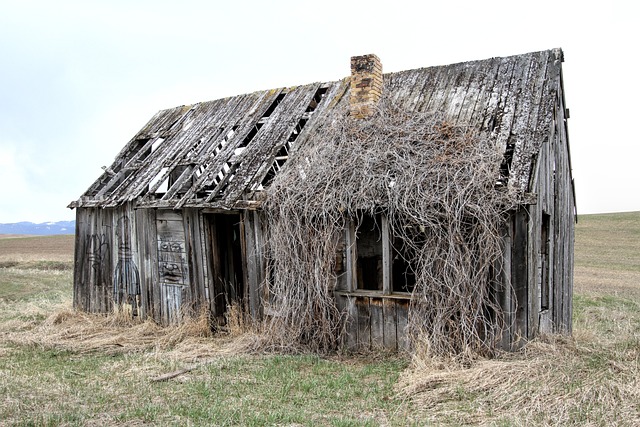Selling a fire-damaged home in California requires adhering to strict building codes, disclosing damage transparently, conducting thorough inspections, obtaining necessary permits, and coordinating with professionals. Homeowners should document damage, file insurance claims, prioritize safety repairs, stage the home, and market its resilience and appeal to buyers. Strategic navigation through these steps enhances property value and facilitates a successful sale.
California’s housing regulations play a pivotal role in ensuring safety and quality, but they can also pose challenges, especially after fires. Understanding these regulations is crucial for homeowners looking to sell a fire-damaged property in California. This comprehensive guide delves into the impacts of fire damage on property standards and sales, providing a step-by-step approach to preparing your home, navigating legal requirements, insurance claims, and marketing strategies to maximize sale potential for your fire-damaged California residence.
- Understanding California's Housing Regulations: A Comprehensive Overview
- Impacts of Fire Damage on Property Standards and Sales
- Step-by-Step Guide: Preparing Your Home for Sale After a Fire
- Legal Requirements for Selling a Fire-Damaged Property in California
- Insurance and Fire Restoration: Navigating Claims and Processes
- Maximizing Sales Potential: Marketing Strategies for Fire Damaged Homes
Understanding California's Housing Regulations: A Comprehensive Overview

California’s housing regulations are comprehensive, designed to ensure safety, accessibility, and sustainability in homes across the state. When dealing with a fire-damaged property, understanding these rules becomes crucial, especially for those looking to sell such a home. The first step is familiarizing yourself with the Building and Safety Code, which governs construction and renovation projects, including post-fire repairs. This code dictates what materials can be used, structural changes allowed, and safety features required.
For instance, if your fire-damaged home in California needs significant repairs, you’ll likely need permits for structural alterations or additions. The state’s strict regulations ensure that any modifications meet safety standards, particularly regarding fire prevention and suppression systems. Additionally, the California Department of Consumer Affairs’ Contractors State License Board oversees construction projects, ensuring licensed professionals are engaged to protect both property owners and tenants. This is especially relevant when dealing with complex repairs after a fire.
Impacts of Fire Damage on Property Standards and Sales

After a fire, homes in California face unique challenges when it comes to selling. Fire damage can significantly impact property standards, affecting both the interior and exterior of a residence. This may include structural damage, water damage from firefighting efforts, smoke stains, and potential safety concerns. As such, homeowners must consider thorough repairs and renovations to meet California’s strict building codes and ensure the home is safe for potential buyers.
When preparing to sell a fire-damaged home in California, it’s crucial to understand how these regulations work. Homeowners should consult with professionals who can assess the extent of the damage and guide them through the necessary repairs. This process involves obtaining permits, ensuring proper building materials are used, and adhering to safety standards. By navigating these requirements effectively, homeowners can enhance their property’s appeal and increase its market value, making it more attractive to buyers looking to purchase a fire-damaged home in California.
Step-by-Step Guide: Preparing Your Home for Sale After a Fire

After a fire, preparing your California home for sale can seem daunting, but with careful planning and a systematic approach, it’s achievable. Here’s a step-by-step guide to navigate this process:
1. Assess the Damage: Start by thoroughly inspecting your property. Document all damaged areas, taking photos as evidence. Identify structural integrity issues and non-structural damage. This step is crucial for both insurance claims and potential buyers’ peace of mind.
2. Hire Professionals: Engage the services of experienced fire restoration specialists. These professionals can help with everything from removing charred materials to restoring electrical systems and plumbing, ensuring your home meets safety standards. Don’t attempt major repairs yourself; it’s essential to leave this to experts who understand fire damage mitigation.
3. Remodel and Repair: Once initial cleaning and stabilization are complete, begin remodeling and repairing. Focus on making the home safe, functional, and visually appealing. Update smoke detectors and carbon monoxide alarms, replace damaged or destroyed fixtures, and repaint to create a fresh, inviting space.
4. Stage Your Home: Staging is key when selling a fire-damaged property. Arrange furniture to emphasize spaciousness and open floor plans. Use neutral decor to make the home more appealing to potential buyers. Highlight any recent repairs and improvements made during the restoration process. A professionally staged home can attract more interest and potentially command a higher sale price.
5. Market Your Property: List your fire-restored home with a real estate agent who specializes in such situations. Use online listings, social media, and local advertising to reach prospective buyers. Emphasize the property’s unique story of resilience and the benefits of modern safety features implemented after the fire.
Legal Requirements for Selling a Fire-Damaged Property in California

Selling a fire-damaged property in California comes with specific legal requirements designed to protect buyers and ensure transparency. If your home has experienced a fire, you must disclose this information to potential buyers. The state law mandates that sellers provide a “Fire Damage Disclosure Statement” along with any other required documents during the real estate transaction process. This statement should include details about when the fire occurred, the extent of the damage, and any repairs made since the incident.
For properties with significant fire damage, it is advisable to conduct a thorough inspection to assess the structural integrity and identify potential hidden issues. Buyers have the right to request this inspection, and you must comply with their requests. If needed, engage professional contractors or inspectors who can provide an accurate report on the property’s condition post-fire. This step ensures that both parties are well-informed, facilitating a smooth sales process in California.
Insurance and Fire Restoration: Navigating Claims and Processes

When it comes to selling a fire-damaged home in California, understanding the insurance and fire restoration processes is crucial. The first step for homeowners is to document the damage thoroughly by taking photos and videos of affected areas. This will be essential when filing an insurance claim, which should be done as soon as possible after the incident. It’s important to know that insurance companies often have specific requirements and timeframes for claiming, so it’s vital to review your policy and follow their procedures closely.
Navigating the claims process can be challenging, especially with fire damage, as restoration work needs to occur before a home can be appraised again. Homeowners should coordinate with their insurance provider to select a qualified restoration company that specializes in fire damage repair. Once the restoration is complete, the home is re-inspected, and if everything meets the standards, the claim is settled, paving the way for the sale of the property. For those looking to sell, having a clear understanding of this process can help when making decisions about repairs and negotiating with potential buyers who may be influenced by the extent of fire damage.
Maximizing Sales Potential: Marketing Strategies for Fire Damaged Homes

Selling a fire-damaged home in California can be challenging, but with the right marketing strategies, it’s possible to maximize sales potential. The first step is to assess the extent of the damage and determine which repairs are necessary. Homeowners should prioritize safety and structural integrity before staging or listing the property. Once the essential repairs are made, focus on highlighting the home’s positive attributes and unique features.
Professional photography and virtual tours can be powerful tools to showcase the space and attract potential buyers. Staging the home with neutral furniture and warm lighting can make it feel inviting and desirable. Additionally, emphasizing the benefits of living in a particular neighborhood or mentioning any recent updates to the area can add value to the property’s appeal. Remember, open communication with real estate agents and understanding the local market are key to successfully navigating the sales process for fire-damaged homes in California.
California’s housing regulations, while stringent, offer a clear path for homeowners affected by fires to navigate the sale of their properties. Understanding these regulations, from property standards to legal requirements and marketing strategies, is key to successfully selling a fire-damaged home in California. By following a comprehensive guide that includes preparing your home, dealing with insurance claims, and employing effective marketing tactics, you can maximize your sales potential. Remember, while fires may leave their mark, the right approach can transform a damaged property into a desirable residence for the next occupants.






